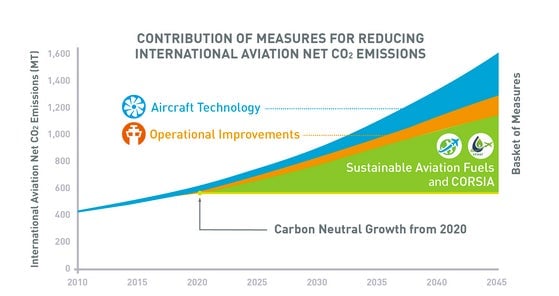Shipping is overtaking aviation in emission reductions
Shipping and aviation emit more than 5% (pdf) of the world’s greenhouse gases, not to mention black carbon, sulfur dioxide, and nitrogen oxides. Left unchecked, their emissions could eat up nearly a third of the world’s “carbon budget,” the allowable emissions to keep the Earth’s climate below 2°C of warming this century.


Shipping and aviation emit more than 5% (pdf) of the world’s greenhouse gases, not to mention black carbon, sulfur dioxide, and nitrogen oxides. Left unchecked, their emissions could eat up nearly a third of the world’s “carbon budget,” the allowable emissions to keep the Earth’s climate below 2°C of warming this century.
It has left a giant hole in the world’s climate strategy because the industries don’t fall under any single country’s jurisdiction. But the aviation and shipping sectors, seeing a low-carbon future, have begun to act.
Aviation went first.
In 2010, international aviation said it would halt emissions growth after 2020 and committed to 2% annual fuel efficiency improvements starting in 2021. It set up an offsetting scheme to reduce emissions as it transitioned away from fossil fuels.
Shipping, as late as 2016, did little despite being responsible for more than 3% (pdf) of global emissions and set to hit 17% by 2050.
Shipping has not only caught up, it has exceeded aviation, says Ned Harvey, who manages the heavy-industry program for the nonprofit Rocky Mountain Institute (RMI). “Eighteen months ago, shipping was the laggard,” he said in an interview. “Now it’s leading.”
In 2018, the International Maritime Organization agreed to emission reductions of 50% below 2008 levels by mid-century. Financiers are adopting an emissions standard for shipping to assess their climate risk. Perhaps even more important is the launch of a carbon-neutral fleet of commercial ships starting in 2030. By that time, say scientists in the Intergovernmental Panel on Climate Change, emissions must have begun their steep decline toward net-zero by 2050 to avert catastrophic warming.
While neither sector’s emission targets will meet the 1.5°C goal agreed upon in the Paris climate agreement in 2015, shipping is now far closer than aviation. The airline industry lacks a clear plan to cut absolute emissions before 2030 or an accelerated program to wean itself off high-carbon fuels. That’s likely to exert enormous pressure on the aviation sector.
Why shipping?
Three factors have come together to accelerate shipping’s ambitions. First, pressure in the supply chain is driving cargo ship operators to clean up their act. Companies such as Amazon are committing to make their operations carbon neutral (or negative), and turning screws on companies that don’t help them comply.
Second, technology favors emission reductions in shipping. Whereas design tolerances for aircraft are tight, ships can more easily be modified for new fuels, larger batteries, and new hull designs. Hydrogen fuels, for example, may substitute for fossil fuels. Today’s (updated) ships could be retrofitted, while aircraft would need to be entirely redesigned at a cost of many billions of dollars. “We can (and are) building engines that can burn zero-emission fuels,” states the Global Maritime Forum, which is testing fuels derived from biomass, hydrogen from renewable electricity, and natural gas combined with carbon capture and storage.
Finally, banks are already moving to identify the highest emitters in the shipping industry, and evaluate them against international climate targets. That may restrict their access to capital in the future as banks seek to reduce their exposure to climate risk. The Poseidon Principles, announced this June, is the first shared standard for banks to measure and disclose climate risk in shipping, or any sector for that matter, says RMI, which helped negotiate it over two years. Eleven banks with $100 billion in shipping debt have now agreed on an emission baseline to assess climate risk and companies’ ability to meet international targets.
The Poseidon Principles, argues RMI, solve a central problem for global emission reductions: collective action. Any one firm (or country) acting alone is ineffective, even putting it at a competitive disadvantage. To succeed, firms need to compete on the same playing field. By giving banks leverage, transparency, and accountability to enforce emission targets and reduce their portfolios’ “carbon exposure” and risks related to climate regulation, laggards are pressured to catch up. A quarter of the shipping industry’s senior debt is now held by banks in the Poseidon agreement, a share that should rise to more than half by the end of the year, says RMI.
The industry’s “moon shot” goal is to float a commercial deep-sea zero-emission vessel by 2030 as a prelude to decarbonizing the fleet. Last year, the International Maritime Organization agreed to cut GHG emissions 50% below 2008 levels by mid-century, putting it, theoretically, within reach of emissions reduction consistent with the Paris Agreement temperature goals. In the meantime, the industry is exploring a suite of options, including slowing down ship speeds by 30% to save fuel (supported by chief executives of at least 107 shipping companies) and alternative fuel sources (biofuels, ammonia, hydrogen, or batteries). Little time is left to act. Given the 30-year lifespan of modern container ships, the next 18 months will be crucial for investors, ports, and shipyards to develop new marine fuels, propulsion, and infrastructure for a carbon-free transition.
Warming skies
The aviation industry isn’t idle. US airlines’ fuel efficiency rose 130% between 1978 and 2018, according to the trade association Airlines for America, allowing the industry to transport 42% more passengers and cargo while only releasing 3% more emissions.
But its early ambitious goals are now behind the science calling for a world with less than 2°C warming. The rise in the number of air passengers, set to double by 2035, has swamped efficiency gains by a factor of three in recent years. Cutting back emissions has become harder as efficiency improvements yield less gains over time (most were from normal turnover of aging aircraft). Flying, which already accounts for more than 2% (pdf) of global CO2 emissions, could soar to nearly a quarter of global GHG emissions by mid-century.
Unlike shipping, aviation doesn’t have an clear path to give up fossil fuels in the foreseeable future. The industry has agreed to keep emissions at 2020 levels, but to meet its goal of zero-carbon growth it must invest in emission reductions in other sectors. It’s relying on a combination of better technology, efficiencies such as satellite aircraft control, and offsets. Lots of offsets.

The Carbon Offsetting and Reduction Scheme for International Aviation, properly administrated, say groups like the Environmental Defense Fund, could tamp down emissions, but a few details have to be ironed out. If not well designed, or kept cheaper than alternatives, the industry will never be incentivized to develop low-carbon synthetic fuels. Such solutions are years (perhaps decades) away from leaving the ground. While electric and hybrid aircraft are taking off (Sweden and Norway plan to eliminate fossil fuels for all short-haul flights by 2040), they won’t be suitable for longer flights for the foreseeable future.
Yet pressure is building. If governments don’t act, customers will. “Flight shaming” is spreading from Europe to the US, convincing travelers to forgo air flights and ratcheting up pressure on the industry to move faster. In Sweden, flights have fallen by 9% this year, in part due to flygskam, or flight shame. Germany is proposing taxing airlines and subsidizing rail. “Unchallenged, this antiflying sentiment will grow and spread,” Alexandre de Juniac, head of the International Air Transport Association, told Bloomberg. “Politicians aren’t sticking up for us.”
Looking for more in-depth coverage of aviation? Sign up for a free trial of Quartz membership, and read our premium field guide on the airline industry’s turbulent future.